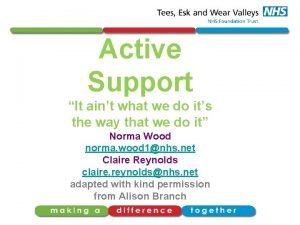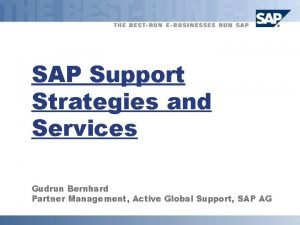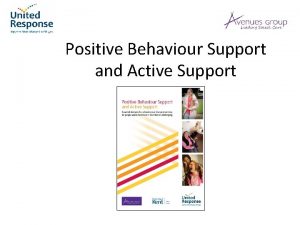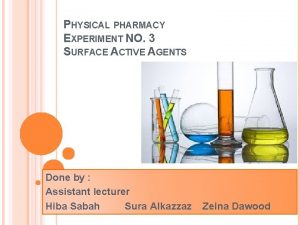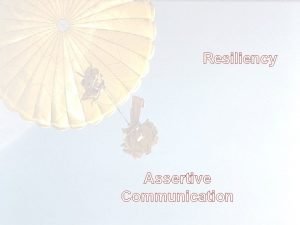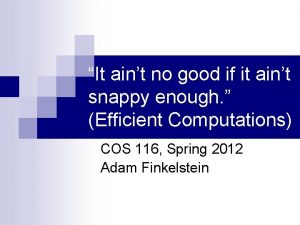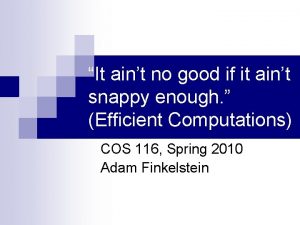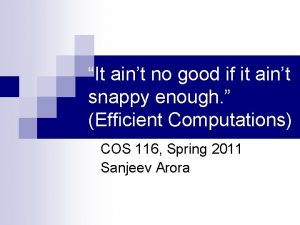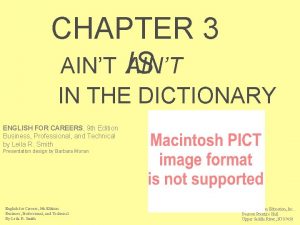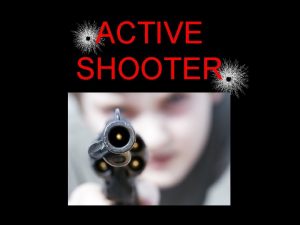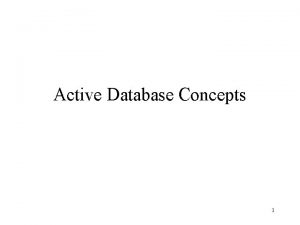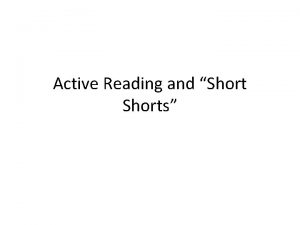Active Support It aint what we do its


















- Slides: 18

Active Support “It ain’t what we do it’s the way that we do it” Norma Wood norma. wood 1@nhs. net Claire Reynolds claire. reynolds@nhs. net adapted with kind permission from Alison Branch

Ordinary Life: We’re engaged 99% of time … Women spend 277 minutes day doing ordinary stuff; men spend 146 minutes a day (Gershuny, 2007)

Engagement and Social Contact in Staffed Services Engagement Contact Average Range Small Homes 48% 8 - 74% 15% 5 - 31% Hostels 25% 6 - 54% 9%, 2 - 17% Hospitals 14% 2 - 23% 4% (Emerson & Halton, 1994) Average Range 3 - 16%

Since 1994? • Average baseline in active support research studies 1989 -2009 is 31% • Engagement is predicted by client ability and assistance from staff • Staff assistance is often inversely related to the behavioural ability of clients • Structural change has not been enough • We need to do something else as well

How much support? • Fifteen supported housing services in Wales - contact from staff average 15% of the time (Felce & Perry, 1995) • Amount of support received - about 9 minutes in every hour but facilitative assistance 1 - 4 minutes an hour on average (Mansell, 2007) • Staff not interacting with people they support in a way that enables greater levels of independence, participation or integration (Mansell, 2007)

A Vicious Circle of Disempowerment The Hotel Model Staff do most things for people rather than create opportunities for people to participate People do not participate in valued activities and spend most of their time doing nothing Staff cannot think of goals or activities people could do. They see their role as a ‘domestic worker’ rather than as an ‘enabler’ Staff perceive people as dependent. They do not spend time interacting with or assisting people and are apprehensive about trying new things (Mansell et al 2005)

What does this mean for people we support? l Passive and disengaged l Lack of opportunity l Lack of choice and control l Lack of development l Loss of skills l Loss of self confidence and motivation l Behaviour that we find challenging may occur

What is Active Support? l Supporting people to engage in meaningful activities and relationships l Using ordinary everyday activities l to encourage choice, engagement & increase independence. l Working with people to promote optimal engagement, irrespective of degree of disability.

Key Elements of Active Support • Every moment has potential • Little and often • Provide just enough support • Choice and control

It is always easier for 10 members of staff without a learning disability to learn one way of doing the same activity, than it is for one person with a learning disability to learn 10 different ways of doing the same activity

Participation is doing part or all. With just the right amount of support

Positive Staff Support 1. Hierarchy of Assistance Graded assistance ASK - INSTRUCT - PROMPT- SHOW- GUIDE The level of support increases. . . 2. Thinking in Steps – Task Analysis Breaking activities down INTO STEPS and doing one step at a time (every activity has some easier bits) 3. Reinforcing Participation – Positively reinforcing & maximising naturally occurring rewards

A Virtuous Circle of Positive Interaction & Empowerment - engagement Staff interact positively with people and provide opportunities for participation Staff think of new ideas for more goals and activities. Staff see themselves as enablers People participate successfully in part of the activities Staff perceive people as more competent. Give more respect control & attention & consequently feel more confident, successful & eager to try new things (Mansell et al 2005)

Organisational commitment is Essential • • Linking all elements of the organisations activity Person centred planning Positive Behavioural Support Health & Safety Risk Management Learning & Development Human Resources Quality Assurance

Active Support Increases ü quality of life ü independence ü choice and control ü connectedness ü staff satisfaction (Jim Mansell and Julie Beadle-Brown et al. 2012)

Active Support decreases übehaviours of concern ümental health issues (depression, anxiety) Mansell and Beadle-Brown (2012), Beadle-Brown et al. (2015)

Activity • See sheet

Thank you For more information please contact: norma. wood 1@nhs. net claire. reynolds 5@nhs. net
 Aint no black in the union jack
Aint no black in the union jack Active high and active low
Active high and active low Primary vs secondary active transport
Primary vs secondary active transport Primary active transport vs secondary active transport
Primary active transport vs secondary active transport Hotel model active support
Hotel model active support Gudrun bernhard
Gudrun bernhard Active support definition
Active support definition Major support and minor support
Major support and minor support The emigree by carol rumens
The emigree by carol rumens Its halloween its halloween the moon is full and bright
Its halloween its halloween the moon is full and bright When a train increases its velocity its momentum
When a train increases its velocity its momentum Its not easy but its worth it
Its not easy but its worth it Sunny rainy snowy windy cloudy
Sunny rainy snowy windy cloudy If its a square it's a sonnet summary
If its a square it's a sonnet summary Active edge table in computer graphics
Active edge table in computer graphics Surface active agents
Surface active agents Ado net active directory
Ado net active directory Active region and saturation region
Active region and saturation region The 3 c's of assertive communication
The 3 c's of assertive communication




